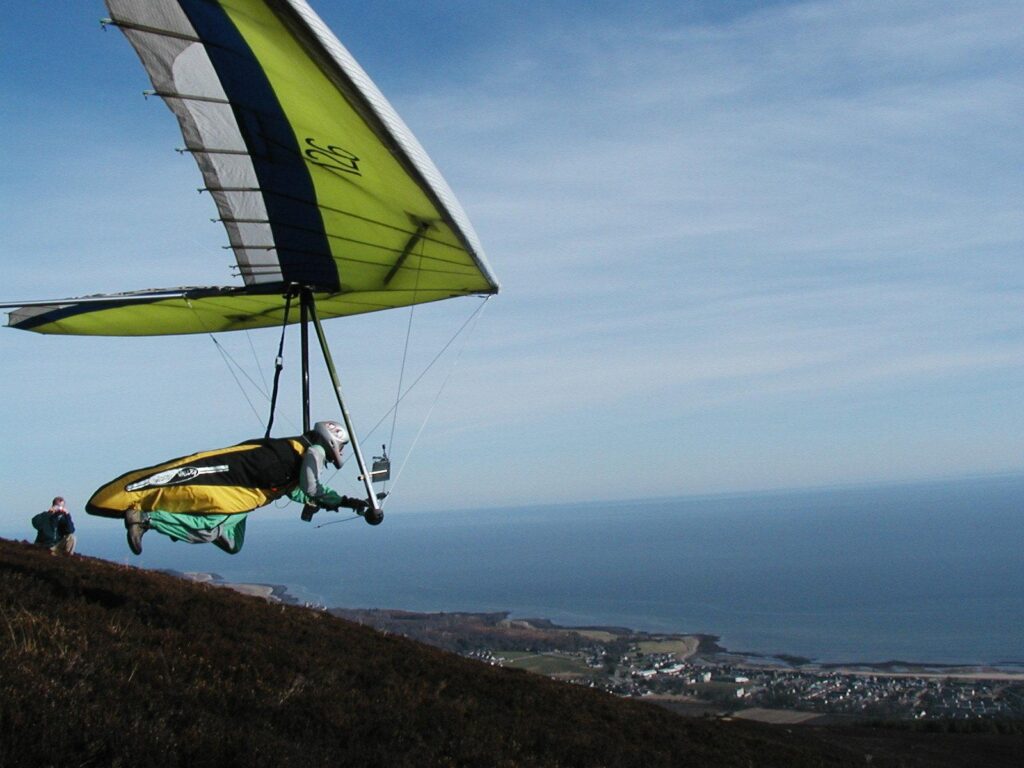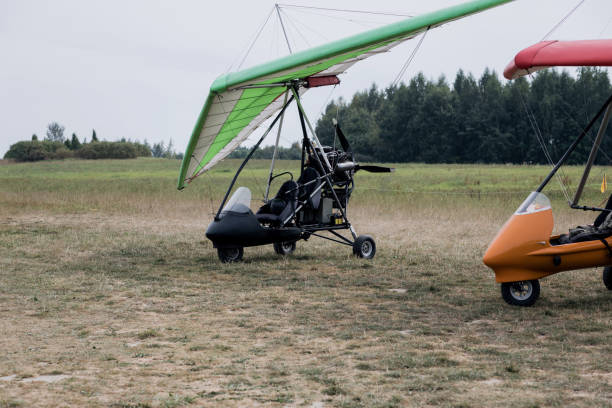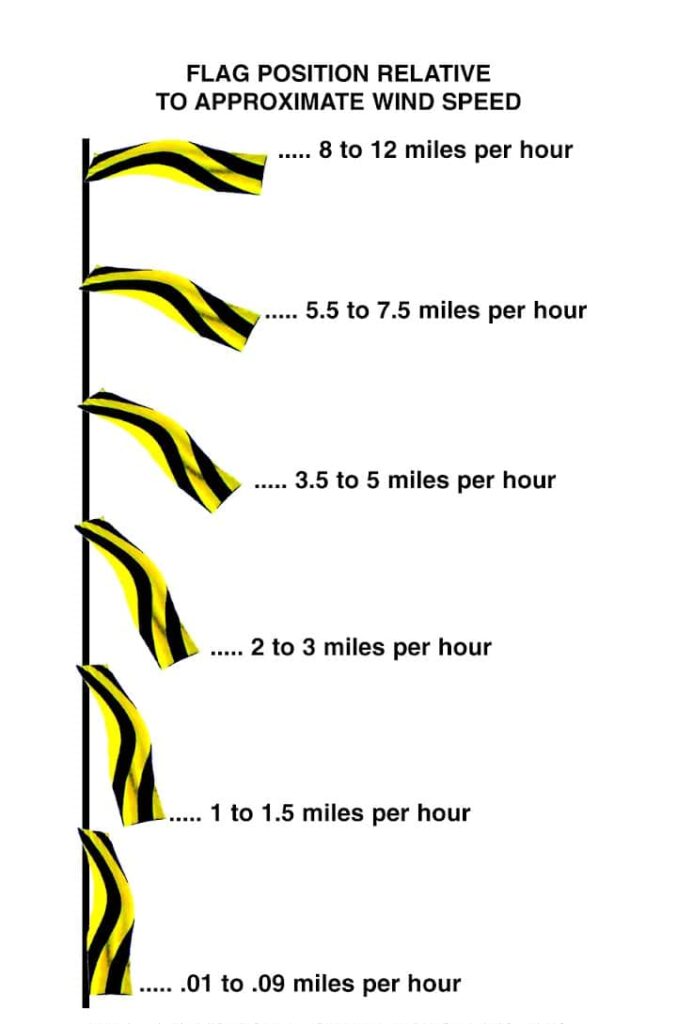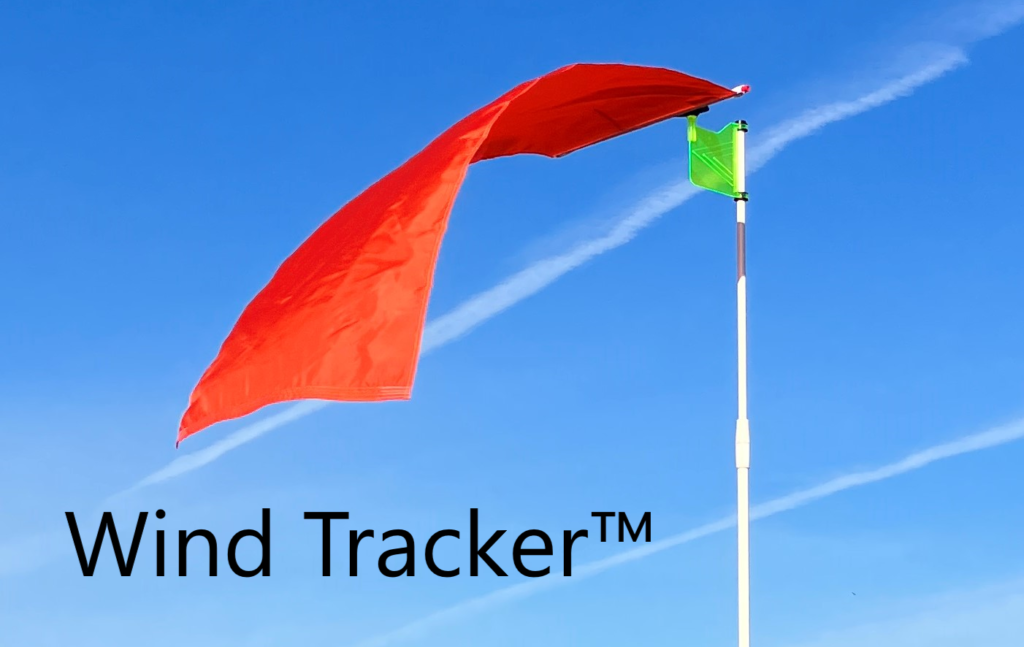Hang Gliding and Paragliding
In the world of hang gliding and paragliding, Wind Tracker™ windsocks serve as essential tools to assess and monitor wind conditions at launch sites and landing zones. These non electronic indicators, designed to respond to even the slightest breeze, provide crucial information to pilots, enabling them to make informed decisions and ensure safe and successful flights.

Here’s why Wind Tracker™ windsocks are a must for hang gliding and power gliding.
Wind Direction Assessment:
Wind Tracker™ windsocks primarily assist pilots in determining wind direction. By observing the orientation of the windsock, pilots can quickly identify the prevailing wind direction at the launch site. This information is vital for planning their takeoff and landing approach. Aligning with the wind’s direction ensures that pilots achieve the necessary lift and maintain stability during flight.

Launch Site Suitability:
Hang gliders and paragliders require specific wind conditions for safe takeoff. Wind Tracker™ windsocks aid pilots in assessing the suitability of a launch site by providing real-time information about wind direction and intensity. If the windsock indicates unfavorable conditions, such as a crosswind or gusty winds, pilots may choose to delay their launch or seek an alternative site with more favorable conditions. This helps mitigate the risks associated with launching in unsuitable wind conditions.

Wind Speed Assessment:
In addition to wind direction, Wind Tracker™ windsocks can also provide a rough estimation of wind speed. The angle at which the windsock extends can give pilots a general idea of the wind’s intensity. This information allows them to gauge whether the wind is within the desired range for safe flight operations. It helps pilots assess whether the wind is strong enough to provide sufficient lift for launching or if it exceeds safe limits, potentially leading to turbulent or hazardous flight conditions.
Emergency Landing Indications:
Wind Tracker™ windsocks placed at landing zones are especially valuable for pilots during emergency situations or unexpected changes in wind conditions. If a pilot encounters sudden shifts in wind direction or gusty winds during flight, they can visually scan the windsocks at potential landing areas to identify suitable locations based on the wind’s orientation. This helps them select the safest landing option and adjust their approach accordingly.
Safety and Decision-making:
Wind Tracker™ windsocks serve as visual aids that contribute to pilot safety and informed decision-making throughout the flight. By continuously monitoring windsocks during their flight, pilots can assess any changes in wind conditions and adapt their flight strategies accordingly. This helps ensure optimal control, stability, and maneuverability throughout the flight, reducing the risk of accidents or unexpected challenges caused by changing wind patterns.
Wind Tracker™ windsocks are essential tools in hang gliding and paragliding as they enable pilots to assess wind direction, estimate wind speed, evaluate launch site suitability, and make informed decisions for safe flight operations. By utilizing Wind Tracker™ windsocks, pilots can enhance their situational awareness, mitigate risks associated with unfavorable wind conditions, and optimize their flight experience, ultimately promoting safety in the skies.
